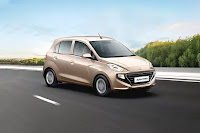Hamam which has a rich legacy dating back to 1931 is charting a new course in its marketing communication strategy. This 300 crore brand from HUL has been positioning itself on the basis of its ingredients - Neem and Tulsi since its inception.
 In 2017, the brand tried to change its course moving from the functional benefit platform derived from its ingredients to a higher order benefit. In marketing parlance, it is called brand laddering.
In 2017, the brand tried to change its course moving from the functional benefit platform derived from its ingredients to a higher order benefit. In marketing parlance, it is called brand laddering.
According to news reports, this is the first time that Hamam is moving away from the functional benefit positioning.
The 2017 campaign #GoSafeOutside aims to use the " women empowerment" as the platform for brand promotion. The brand is taking up the cause of safety of girls for its promotion.
The ad shows how a shy young girl is motivated by the mother to stand up on her own.
The concept of women empowerment is nothing new in the Indian marketing scene. Many brands including some soap brands like Lux have taken up this platform for brand promotion.
In this campaign, Hamam encourages the young girls to take up self-defense courses that would give them the necessary confidence to go out of their safe zone.
In 2018, the brand went further ahead with the campaign and tried to create a network of mothers called Hamam Mothers Safety Force. This network is intended to provide a watchful eye on the safety of young girls.
HUL is known for such ground level activation in its various cause marketing campaign for its brands. The brand should be lauded for identifying a potent issue regarding women safety and doing something about it. The brand runs the hashtag " GoSafeOutside for this initiative.
The success of a cause marketing campaign revolves around the relevance, brand connect and the impact. This campaign is very relevent in today's times. It needs to be seen how HUL carries this forward to create a lasting impact on the consumer's mind.




